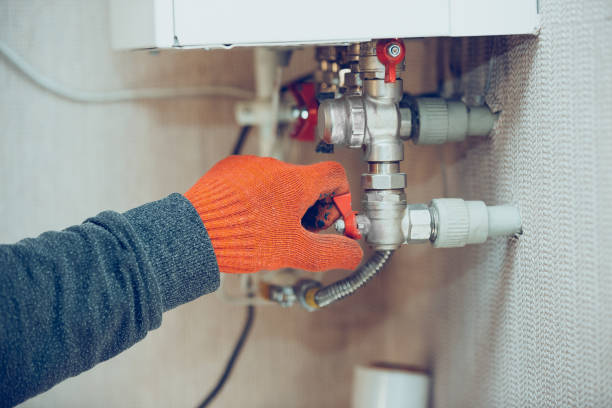Techniques to Fix Low Water Pressure in Your Home
Techniques to Fix Low Water Pressure in Your Home
Blog Article
The author is making a number of good points related to Low Water Pressure in the House? as a whole in the content following next.

Low tide pressure in your house can be an irritating problem, impacting everything from bathing to cleaning dishes. If you're experiencing weak water flow, there are numerous feasible reasons and remedies to explore. In this overview, we'll discuss typical factors for low water pressure and functional steps to address the problem successfully.
Intro to Low Water Pressure
Low tide pressure occurs when the flow of water from your faucets, showers, and various other fixtures is weak than typical. This can make day-to-day tasks more difficult and less effective. Recognizing the sources of low tide stress is critical to discovering the ideal solution.
Typical Root Causes Of Low Water Pressure
Pipe Obstructions
Over time, pipelines can end up being clogged with mineral deposits, sediment, or debris, restricting the circulation of water. This is an usual issue in older homes with galvanized steel pipelines.
Corrosion
Corrosion within pipes can lead to leakages and minimized water stress. Corrosion buildup can constrict water circulation, especially in aging plumbing systems.
Faulty Stress Regulators
Pressure regulators are in charge of keeping consistent water pressure in your home. If they malfunction, it can cause low tide pressure or unequal circulation throughout your home.
Metropolitan Supply Of Water Issues
Often, the issue lies outside your home. Community water supply issues, such as main line leakages or upkeep work, can temporarily reduce water stress in your area.
How to Identify Low Tide Stress
Inspecting Faucets and Components
Begin by examining the water stress at various taps and components throughout your home. If the issue is separated to specific areas, it might indicate local troubles.
Inspecting Pipelines
Evaluate noticeable pipes for indicators of leaks, corrosion, or obstructions. Take notice of any type of unusual sounds, such as banging or rattling pipes, which can show problems within the plumbing system.
Consulting with a Plumber
If you're not able to determine the source of low water stress, take into consideration employing an expert plumber to carry out a thorough evaluation. They can determine underlying concerns and recommend proper options.
Do It Yourself Solutions to Take Care Of Low Water Stress
Cleansing Aerators and Showerheads
Mineral deposits can accumulate in aerators and showerheads, decreasing water circulation. Remove and cleanse these parts frequently to improve water pressure.
Flushing Water Heater
Debris build-up in the hot water heater can restrict circulation and lower efficiency. Purging the storage tank regularly helps get rid of debris and keep optimal performance.
Examining Stress Regulatory Authority
Guarantee that the pressure regulator is operating correctly. Readjusting or changing the regulatory authority can assist recover proper water pressure throughout your home.
Clearing Up Clogs in Piping
For small clogs, attempt using a plumbing serpent or chemical drainpipe cleaner to clear blockages in pipelines. Be cautious when utilizing chemicals and adhere to security guidelines.
When to Call a Specialist Plumber
If do it yourself initiatives fall short to fix the concern or if you suspect substantial plumbing issues, it's ideal to seek support from a licensed plumber. They have the know-how and tools to resolve complex issues safely and effectively.
Preventive Measures to Keep Water Pressure
Normal Maintenance
Set up routine upkeep for your plumbing system to prevent concerns such as rust, leaks, and obstructions. Resolving minor problems early can aid stay clear of even more significant repair work in the future.
Mounting a Stress Booster
Consider installing a pressure booster pump to improve water stress in areas with continually low flow. This can be specifically beneficial for multi-story homes or buildings with high-demand fixtures.
Tracking Water Usage
Bear in mind water usage practices and stay clear of ill-using the plumbing system. Basic adjustments, such as staggering showers and washing tons, can help preserve ample water stress.
Conclusion
Managing low tide pressure can be discouraging, however determining the underlying reasons and executing proper remedies can restore optimum circulation throughout your home. Whether it's cleansing aerators, examining pipes, or talking to a plumber, taking aggressive steps can make certain a stable supply of water for your everyday demands.
FOUR WAYS TO FIX LOW WATER PRESSURE NOW
Turning on a shower or faucet only to find the water comes out in a sad, slow drizzle is never a good feeling. How exactly are you supposed to wash a pan or take a quick shower when it takes 10 minutes just to rinse off a little soap? The good news is that when your water pressure is bad, there's always a cause: typically one that can be easily fixed. Here are some of the most common causes of low pressure and what you can do to fix the issue:
DEBRIS AND MINERAL DEPOSIT BUILDUPS
If you notice low water pressure from just one or two of the fixtures in your house, the problem likely has to do with debris buildup. Water is full of minerals and other debris, all of which can accumulate in your pipes and on your fixtures. This can cause a blockage that affects how much water flows through. To fix this, try filling a small plastic bag with white vinegar, and use a rubber band to hang it around your showerhead or faucet. Let the head of the fixture soak for a few hours, and the vinegar should loosen the deposits.
WATER LEAKS
Leaks are another common cause of low water pressure. If water is flowing out of your plumbing through a hole or crack before it can reach your fixture, the pressure coming out of the faucet or showerhead will be lower. A plumbing professional is your best bet for finding and repairing a leak in your water supply pipes.
Leaks are another common cause of low water pressure. If water is flowing out of your plumbing through a hole or crack before it can reach your fixture, the pressure coming out of the faucet or showerhead will be lower. A plumbing professional is your best bet for finding and repairing a leak in your water supply pipes.
FOUR WAYS TO FIX LOW WATER PRESSURE NOW
Turning on a shower or faucet only to find the water comes out in a sad, slow drizzle is never a good feeling. How exactly are you supposed to wash a pan or take a quick shower when it takes 10 minutes just to rinse off a little soap? The good news is that when your water pressure is bad, there's always a cause: typically one that can be easily fixed. Here are some of the most common causes of low pressure and what you can do to fix the issue:
DEBRIS AND MINERAL DEPOSIT BUILDUPS
If you notice low water pressure from just one or two of the fixtures in your house, the problem likely has to do with debris buildup. Water is full of minerals and other debris, all of which can accumulate in your pipes and on your fixtures. This can cause a blockage that affects how much water flows through. To fix this, try filling a small plastic bag with white vinegar, and use a rubber band to hang it around your showerhead or faucet. Let the head of the fixture soak for a few hours, and the vinegar should loosen the deposits.
WATER LEAKS
Leaks are another common cause of low water pressure. If water is flowing out of your plumbing through a hole or crack before it can reach your fixture, the pressure coming out of the faucet or showerhead will be lower. A plumbing professional is your best bet for finding and repairing a leak in your water supply pipes.
Leaks are another common cause of low water pressure. If water is flowing out of your plumbing through a hole or crack before it can reach your fixture, the pressure coming out of the faucet or showerhead will be lower. A plumbing professional is your best bet for finding and repairing a leak in your water supply pipes.
A VALVE ISSUE
If you have low water pressure throughout your home, check your main shut-off valve to make sure it's completely open. You may also want to see if there's a pressure-reducing valve installed. If there is, have a plumber help you adjust the settings to get the pressure you're looking for.
OTHERS USING WATER
Believe it or not, your low water pressure could be caused by your neighbors. If you notice low pressure at certain times of day, it may be because you and the people living next to you have similar schedules - when everyone is showering at the same time, the pressure will be lower in every home. Low pressure throughout the neighborhood may also be caused by an issue with your municipal water supply. If that's the case, call the supplier to see if they're working on the issue.
https://www.rotorooter.com/blog/water-leaking/low-water-pressure-fixes/

I found that page on Low Water Pressure in the House? when perusing the search engines. Please pause to share this write-up if you enjoyed reading it. We appreciate reading our article about 4 Ways to Troubleshoot Low Water Pressure.
Get Started Report this page